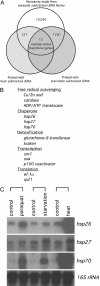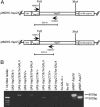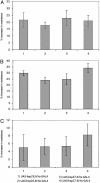Multiple-stress analysis for isolation of Drosophila longevity genes
- PMID: 15308776
- PMCID: PMC515105
- DOI: 10.1073/pnas.0404648101
Multiple-stress analysis for isolation of Drosophila longevity genes
Abstract
Long-lived organisms tend to be more resistant to various forms of environmental stress. An example is the Drosophila longevity mutant, methuselah, which has enhanced resistance to heat, oxidants, and starvation. To identify genes regulated by these three stresses, we made a cDNA library for each by subtraction of "unstressed" from "stressed" cDNA and used DNA hybridization to identify genes that are regulated by all three. This screen indeed identified 13 genes, some already known to be involved in longevity, plus candidate genes. Two of these, hsp26 and hsp27, were chosen to test for their effects on lifespan by generating transgenic lines and by using the upstream activating sequence/GAL4 system. Overexpression of either hsp26 or hsp27 extended the mean lifespan by 30%, and the flies also displayed increased stress resistance. The results demonstrate that multiple-stress screening can be used to identify new longevity genes.
Figures




References
-
- Martin, G. M., Austad, S. N. & Johnson, T. E. (1996) Nat. Genet. 13, 25–34. - PubMed
-
- Finkel, T. & Holbrook, N. J. (2000) Nature 408, 239–247. - PubMed
-
- Arking, R., Buck, S., Berrios, A., Dwyer, S. & Baker, G. T., III (1991) Dev. Genet. 12, 362–370. - PubMed
-
- Rose, M.R., Vu, L. N., Park, S. U. & Graves, J. L., Jr. (1992) Exp. Gerontol. 27, 241–250. - PubMed
-
- Lin, Y. J., Seroude, L. & Benzer, S. (1998) Science 282, 943–946. - PubMed
Publication types
MeSH terms
Substances
Grants and funding
LinkOut - more resources
Full Text Sources
Molecular Biology Databases
Research Materials
Miscellaneous

